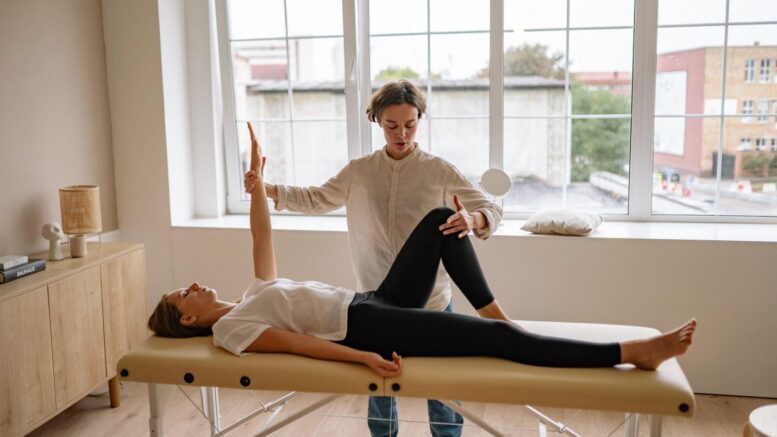Restoring mobility through physical therapy is an essential component in helping people reclaim their lives to their fullest potential. Whether it’s from recovering from injury or illness, dealing with a chronic health condition, or simply trying to improve the overall quality of life – physical therapy plays a critical role in helping individuals move more easily and confidently throughout their daily activities. From developing personalized exercise programs that focus on strengthening muscles and joints, enhancing balance coordination, improving flexibility range-of-motion, and more – therapeutic professionals strive to help individuals overcome any limitations imposed by movement restrictions associated with mobility issues. In this blog post, we’ll explore how physical therapists play an important part in restoring patients’ ability to move freely without restriction so they can feel empowered to continue down a path of healthy living.
What is Physical Therapy
Physical therapy is a medical practice that focuses on restoring mobility and function to those who are experiencing physical limitations. As we age, injuries, illnesses, and chronic conditions can all cause physical restrictions, making it difficult to complete daily tasks or live independently. Physical therapy can help individuals regain strength, flexibility, and mobility through a personalized treatment plan that includes exercise, manual therapy, and education. Whether you are recovering from surgery, managing a chronic condition, or simply trying to improve your overall fitness level, physical therapy can help you achieve your goals and live your best life. Whether it’s post-operative rehabilitation or managing chronic conditions, physical therapy can be the key to restoring movement and regaining independence. Physical therapists are trained professionals who understand how to analyze an individual’s condition and develop a plan that is tailored specifically to their needs.
Different techniques used in physical therapy
Physical therapy is a form of treatment that uses specific techniques to improve movement and balance in individuals. There are several different methods used in physical therapy, including exercises, stretches, and massages. The therapist will carefully evaluate the patient’s condition to determine the best techniques to use. For example, if a patient is experiencing a limited range of motion, the therapist may use passive exercises to help increase flexibility. Similarly, techniques like proprioceptive neuromuscular facilitation (PNF) can be used to improve balance in patients with neurological conditions. Regardless of the specific techniques used, physical therapy is a powerful tool that can help individuals recover from injuries or improve their quality of life.
Understanding the positive effects of physical therapy
Physical therapy has been found to have numerous positive effects on musculoskeletal health. By working with a trained therapist, patients can improve their range of motion, reduce pain, and prevent further injury. Physical therapy can be especially beneficial for those who have suffered from accidents or injuries that limit their mobility. With a personalized treatment plan, patients can gain strength and independence, allowing them to lead a more active lifestyle. Additionally, physical therapy can help address chronic conditions such as arthritis, providing relief and improving the overall quality of life. Overall, physical therapy has the potential to greatly improve musculoskeletal health, helping patients to live their fullest, most active lives.
Recognizing when physical therapy may be needed
Physical therapy can be an integral part of recovering from an injury or illness. Sometimes, however, it can be difficult to know when physical therapy may be necessary. Here are some things to keep in mind: if you are experiencing pain or discomfort that is impacting your ability to carry out daily activities, if your range of motion is limited, or if you are having difficulty with balance or coordination, physical therapy may be recommended. Additionally, if you have recently undergone surgery or suffered an injury that has resulted in a loss of strength or mobility, physical therapy may be an important aspect of your recovery. It’s important to recognize when physical therapy may be beneficial in order to give yourself the best chance at a full and complete recovery.

Ways to incorporate physical therapy into everyday life
Physical therapy is crucial to improving mobility, but it can often be a daunting task to find the time and motivation to regularly incorporate it into our daily routines. However, there are simple ways to make physical therapy a part of our everyday lives, such as taking frequent breaks to stretch during long periods of sitting or standing, doing physical therapy exercises while watching TV or listening to music, and incorporating low-impact exercises like walking or swimming into our daily schedule. By making physical therapy a habit, we can improve our mobility and overall quality of life.
Conclusion
In conclusion, physical therapy is a great tool to help improve mobility and keeps you active. It can help with long-term recovery from injuries, restore strength and balance, and ultimately improve musculoskeletal health. Regular exercise is key to maintaining mobility, and physical therapy can be an invaluable supplement for both strengthening and enhancing performance. Additionally, being mindful of when one may need physical therapy is important; however, incorporating small exercises into everyday life as preventative measures isn’t a bad idea either. With the right level of commitment and dedication to physical therapy activities little by little anyone can regain or maintain mobility.
